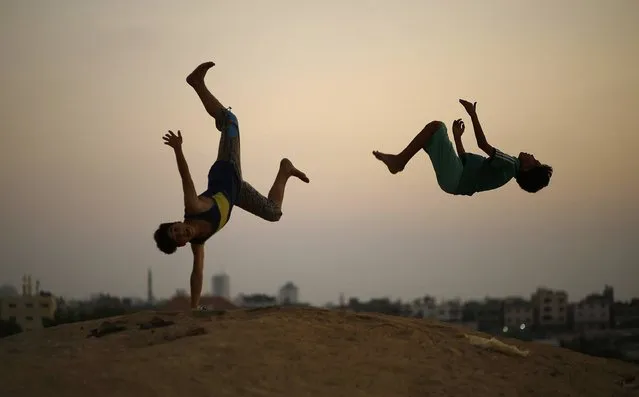
Palestinian youths practise parkour in Gaza City on August 11, 2017. (Photo by Mohammed Abed/AFP Photo)
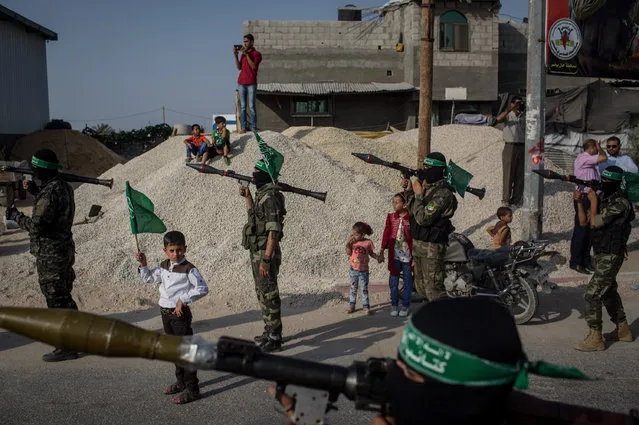
A young boy holds up a Hamas flag in between Palestinian Hamas militant during a military show in the Bani Suheila district on July 20, 2017 in Gaza City, Gaza. For the past ten years Gaza residents have lived with constant power shortages, in recent years these cuts have worsened, with supply of regular power limited to four hours a day. On June 11, 2017 Israel announced a new round of cuts at the request of the Palestinian authorities and the decision was seen as an attempt by President Mahmoud Abbas to pressure Gaza's Hamas leadership. Prior to the new cuts Gaza received 150 megawatts per day, far below it's requirements of 450 megawatts. In April, Gaza's sole power station which supplied 60 megawatts shut down, after running out of fuel, the three lines from Egypt, which provided 27 megawatts are rarely operational, leaving Gaza reliant on the 125 megawatts supplied by Israel's power plant. The new cuts now restrict electricity to three hours a day severely effecting hospital patients with chronic conditions and babies on life support. During blackout hours residents use private generators, solar panels and battery operated light sources to live. June 2017 also marked ten years since Israel began a land, sea and air blockade over Gaza. Under the blockade, movement of people and goods is restricted and exports and imports of raw materials have been banned. The restrictions have virtually cut off access for Gaza's two million residents to the outside world and unemployment rates have skyrocketed forcing many people into poverty and leaving approximately 80% of the population dependent on humanitarian aid. (Photo by Chris McGrath/Getty Images)
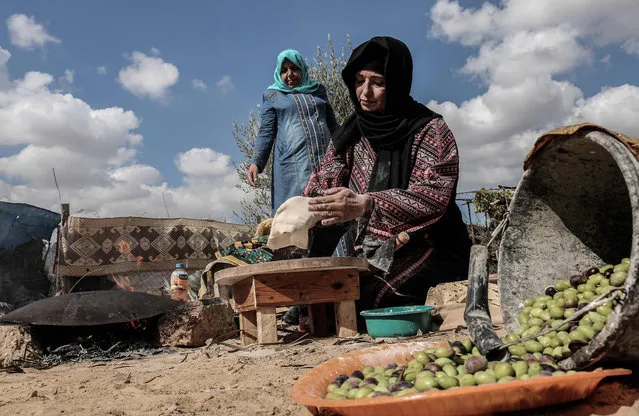
A Palestinian woman prepares traditional bread during the olive harvesting season in Khan Yunis in the southern Gaza Strip on October 11, 2017. (Photo by Said Khatib/AFP Photo)
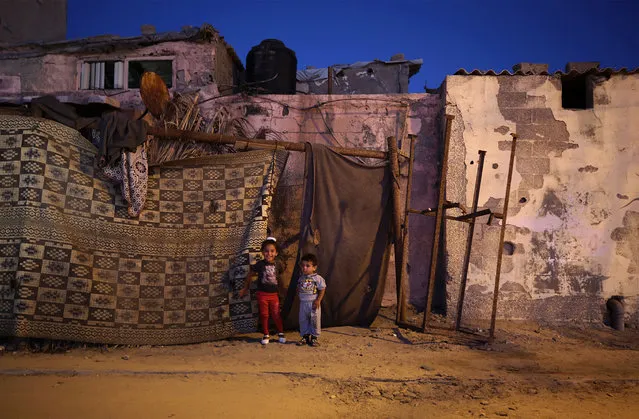
Palestinian refugee children play outside of their family house during a power outage at al Shateaa refugee camp, in Gaza City, 30 July 2017. The 1.8 million people who reside in Gaza, experience some 20 electricity outages per day. According to reports on 16 April 2017, the Gaza Strip sole functioning power station ran out of fuel and stopped working. The Gaza power Generating Company plant usually operates only eight hours a day, after its fuel crosses into Gaza through the Israeli Kerem Shalom border crossing. (Photo by Mohammed Saber/EPA)
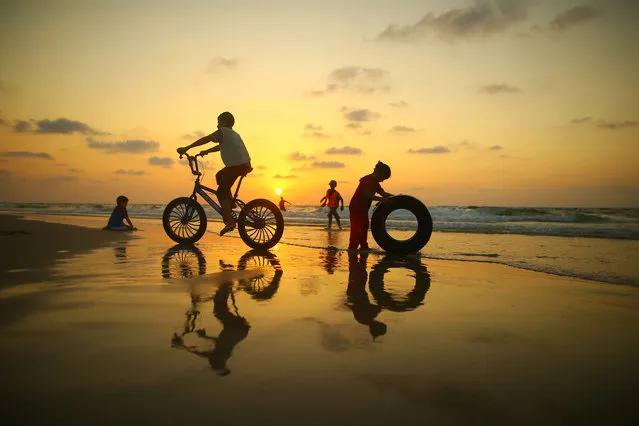
Palestinian children play on the beach in Gaza City on September 21, 2017. (Photo by Mohammed Abed/AFP Photo)

Palestinian beekeepers collect honey at a farm in Rafah in the southern Gaza Strip April 25, 2017. (Photo by Ibraheem Abu Mustafa/Reuters)
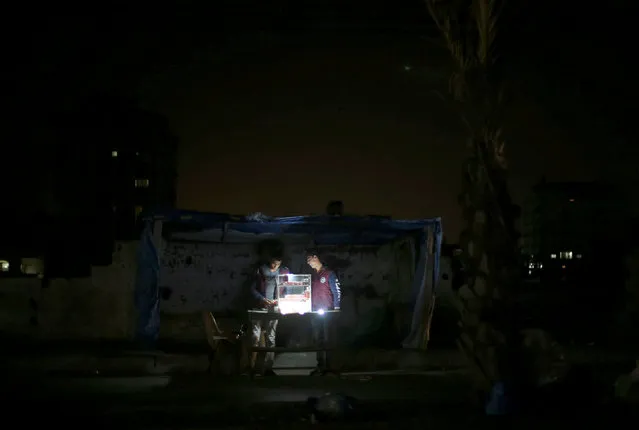
A Palestinian vendor uses battery-powered lights as he sells cigarettes during power cut at Shati refugee camp in Gaza City April 25, 2017. (Photo by Mohammed Salem/Reuters)
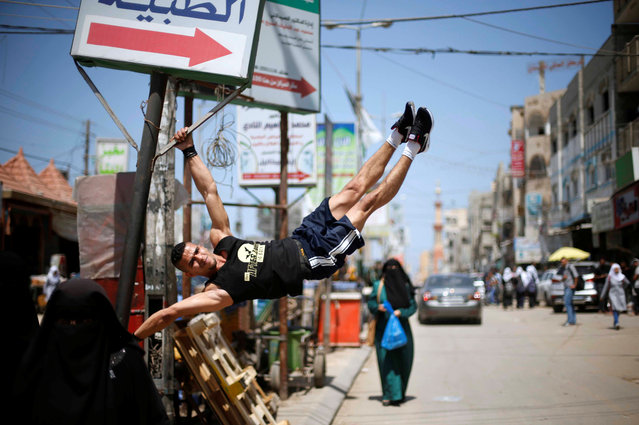
Palestinian man Mohammed al-Hoor, 23, demonstrates his street workout skills in Nuseirat refugee camp, in the central Gaza Strip on May 2, 2017. (Photo by Mohammed Salem/Reuters)
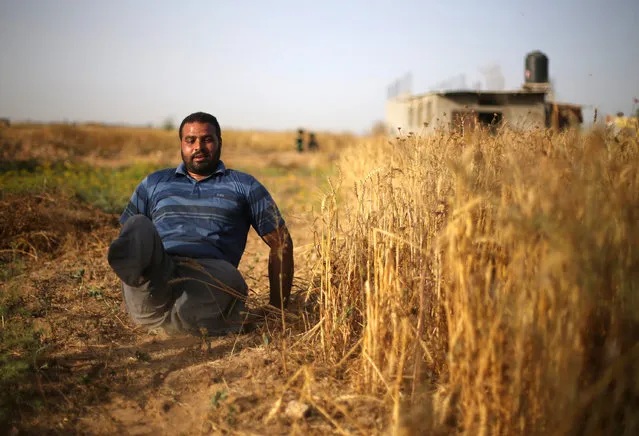
Palestinian man Louy Al-Najar drags himself as he harvests wheat at a field in an area adjacent to the border with Israel, in Khan Younis in the southern Gaza Strip May 10, 2017. (Photo by Ibraheem Abu Mustafa/Reuters)
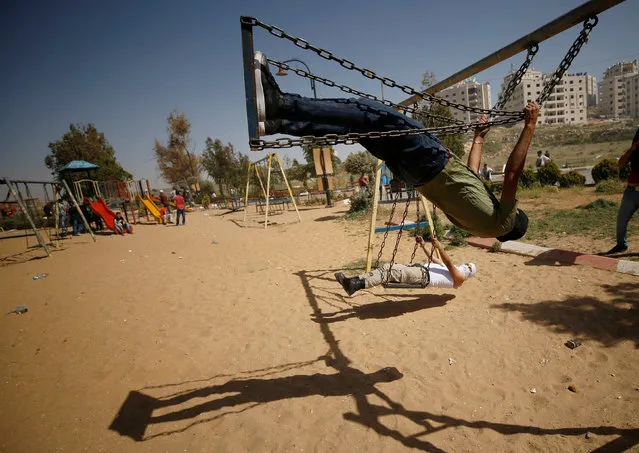
Palestinian protesters swing as they rest at a park during clashes with Israeli troops at a protest in support of Palestinian prisoners on hunger strike in Israeli jails, near the Jewish settlement of Beit El, near the West Bank city of Ramallah May 11, 2017. (Photo by Mohamad Torokman/Reuters)
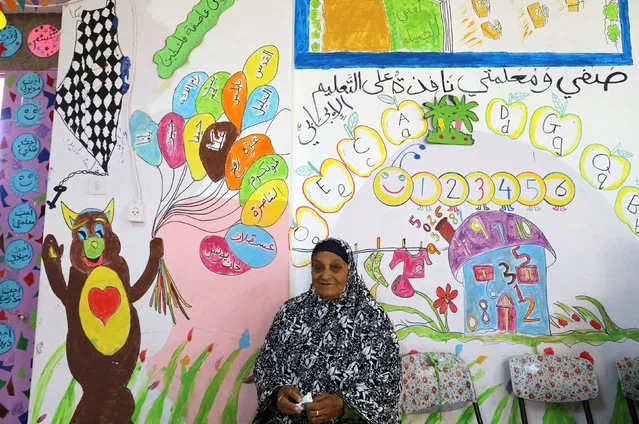
A Palestinian woman waits to cast her ballot at a polling station during municipal elections in the West Bank village of Yatta, near Hebron May 13, 2017. (Photo by Ammar Awad/Reuters)
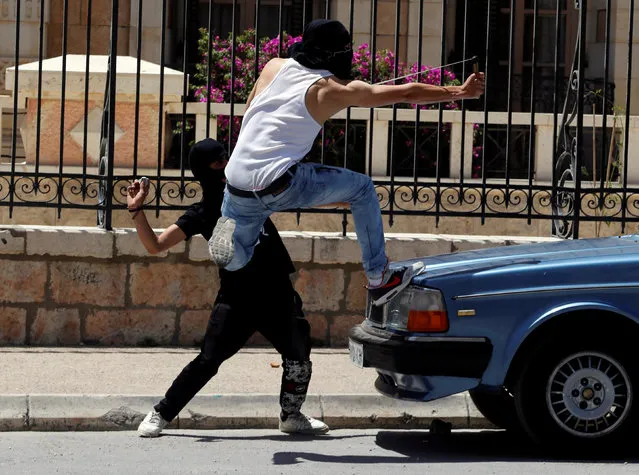
Palestinian protesters hurl stones towards Israeli troops during clashes at a protest marking the 69th anniversary of Nakba, in the West Bank town of Bethlehem May 15, 2017. (Photo by Ammar Awad/Reuters)
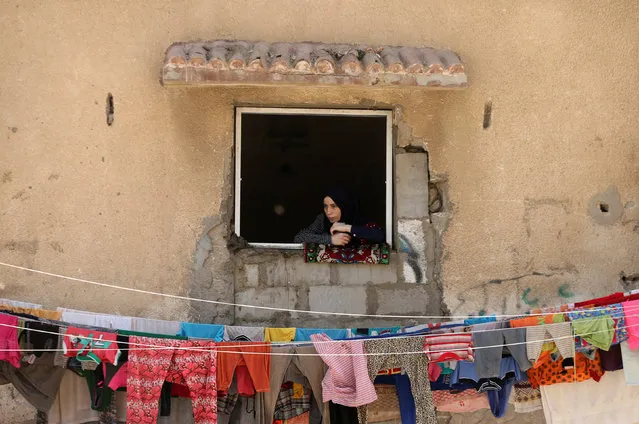
A woman looks out of a house window as she watches the funeral of Palestinian fisherman Mohammed Baker in Gaza City May 16, 2017. (Photo by Mohammed Salem/Reuters)
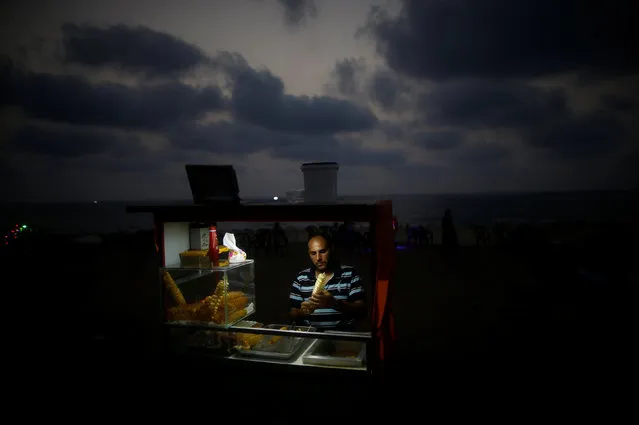
A Palestinian vendor sells snacks on a beach during a power cut as he uses battery-powered lights in Gaza City, July 12, 2017. (Photo by Mohammed Salem/Reuters)
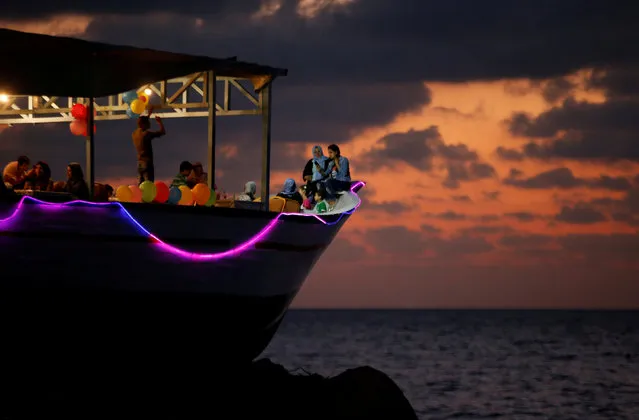
Palestinians sit at “Lolo Rose” ship which has become a popular restaurant, on a beach in Gaza City July 31, 2017. (Photo by Mohammed Salem/Reuters)
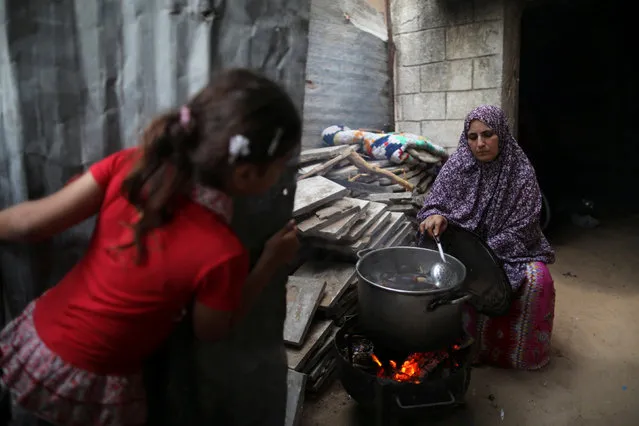
A Palestinian woman cooks on a wood fire at her house during power cut in Beit Lahiya town in the northern Gaza Strip July 6, 2017. (Photo by Mohammed Salem/Reuters)
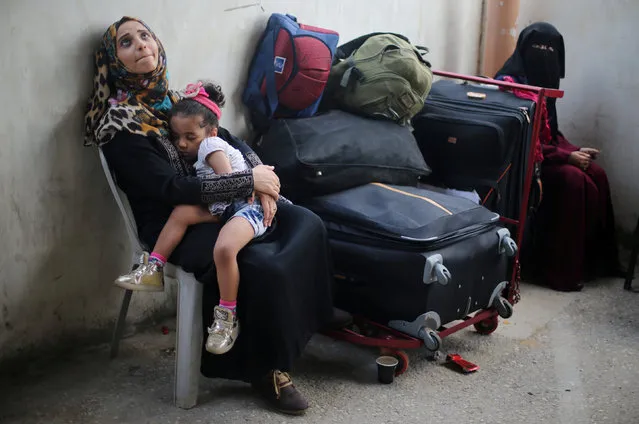
A Palestinian woman holds her daughter as they wait for a travel permit to cross into Egypt through the Rafah border crossing after it was opened by Egyptian authorities for humanitarian cases, in Rafah in the southern Gaza Strip August 16, 2017. (Photo by Ibraheem Abu Mustafa/Reuters)
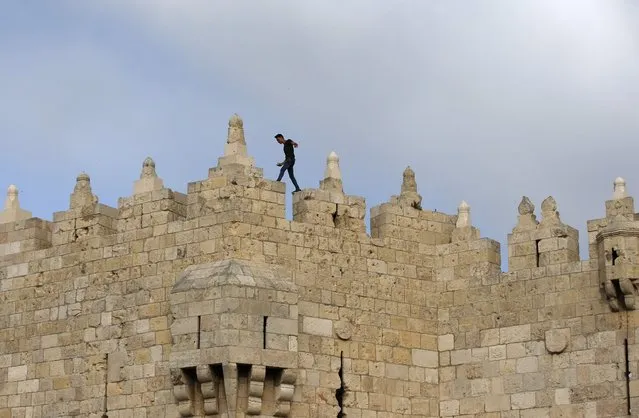
A Palestinian youth walks on top of the Damascus Gate building in Jerusalem's Old City on May 18, 2017. (Photo by Ahmad Gharabli/AFP Photo)
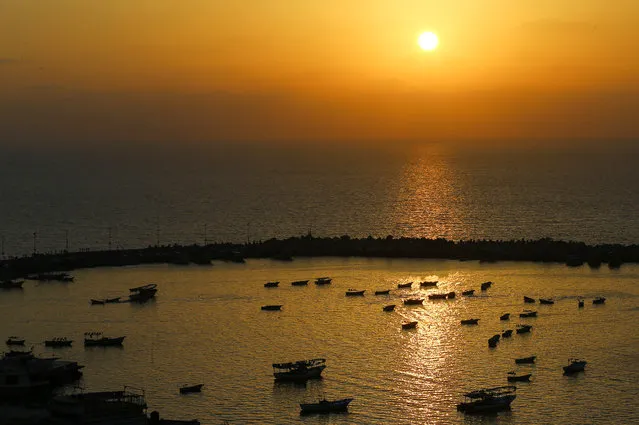
A picture taken on May 5, 2017 shows a general view of the boats moored in the seaport of Gaza City at sunset. (Photo by Mohammed Abed/AFP Photo)
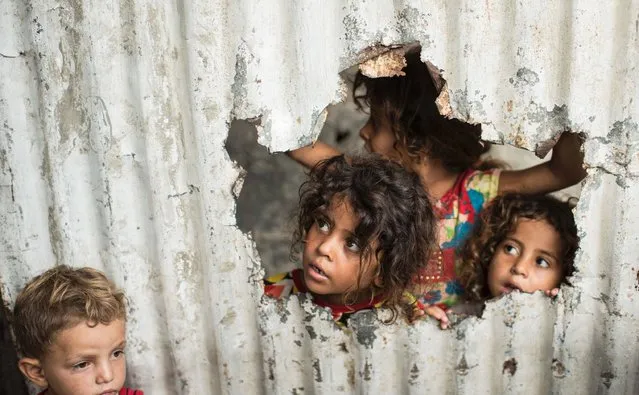
Palestinian children look through a hole in a sheet metal fence outside their home in a poor neighbourhood in Gaza City on August 8, 2017. (Photo by Mahmud Hams/AFP Photo)
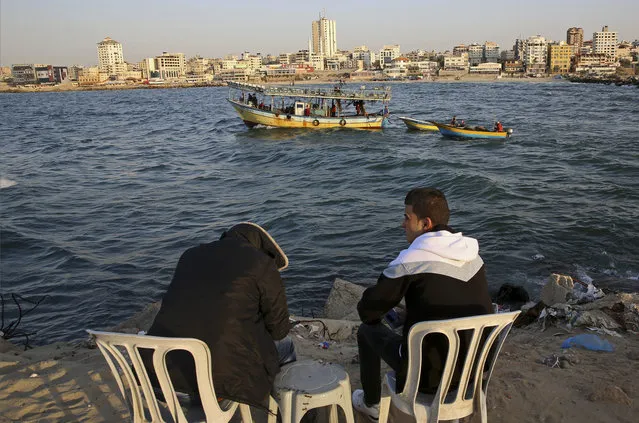
Youths sit as fishermen sail into the waters of the Mediterranean Sea, in Gaza City, Wednesday, October 18, 2017. Israel expanded the fishing zone for Gaza's fishermen from six nautical miles to nine miles for the two-month season. (Photo by Adel Hana/AP Photo)
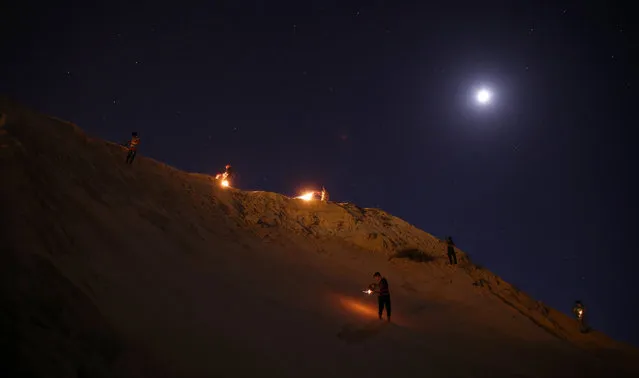
A Palestinian boy plays with fireworks as he celebrates the start of the Muslim holy month of Ramadan in Gaza City, Wednesday, May 31, 2017. Ramadan is traditionally a time of reflection and prayer, and Muslims are expected to abstain during daylight hours from food, drink, smoking and s*x to focus on spirituality, good deeds and charity. The fast presents a physical and spiritual challenge every year, but particularly when the holiday falls during harsh Mideast summer when the days are longest and temperatures soar in some places to 50 degrees Celsius (120 Fahrenheit). (Photo by Hatem Moussa/AP photo)
31 Oct 2017 09:03:00,
post received
0 comments
